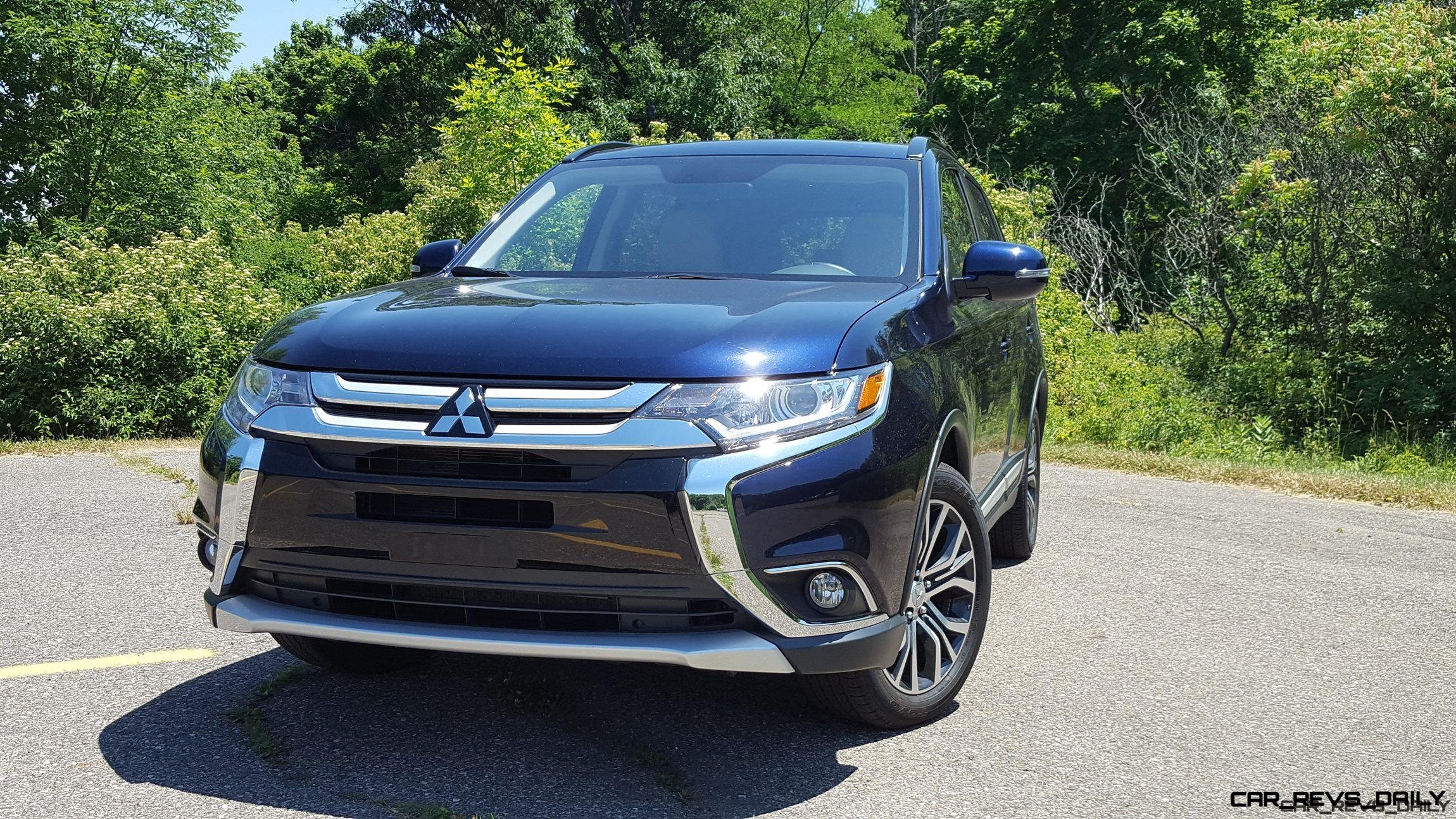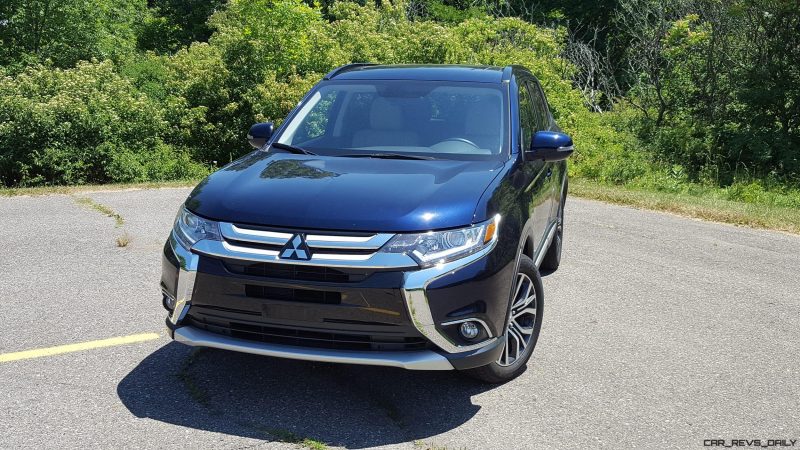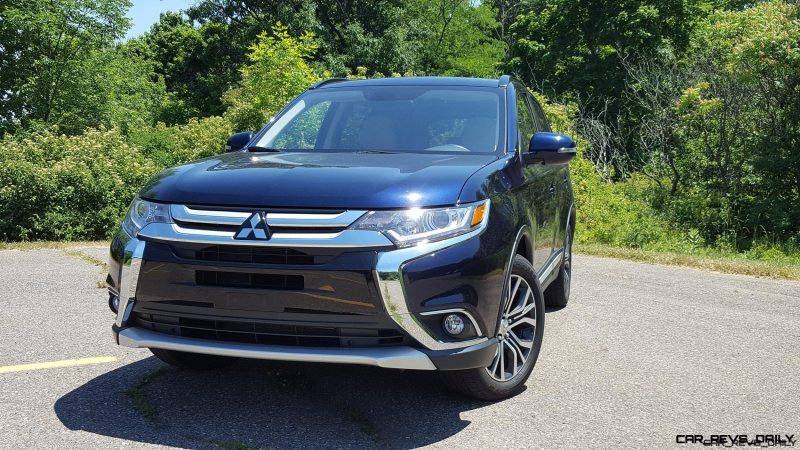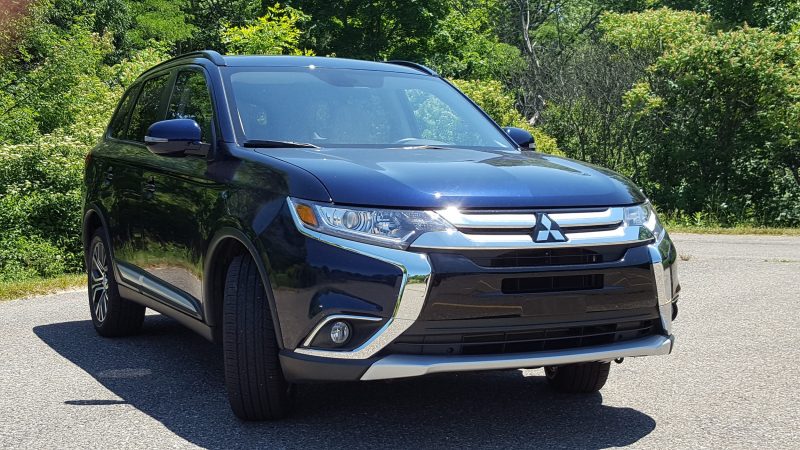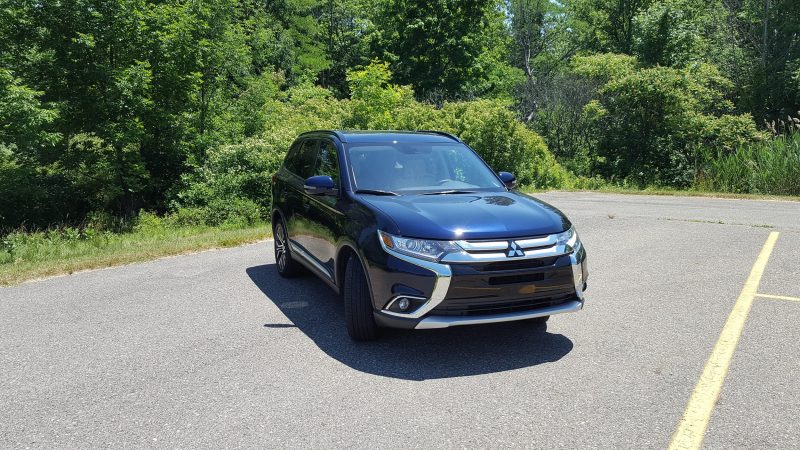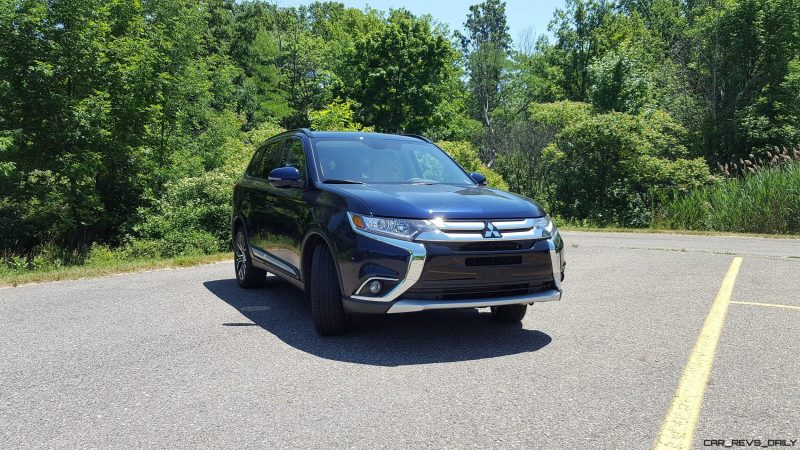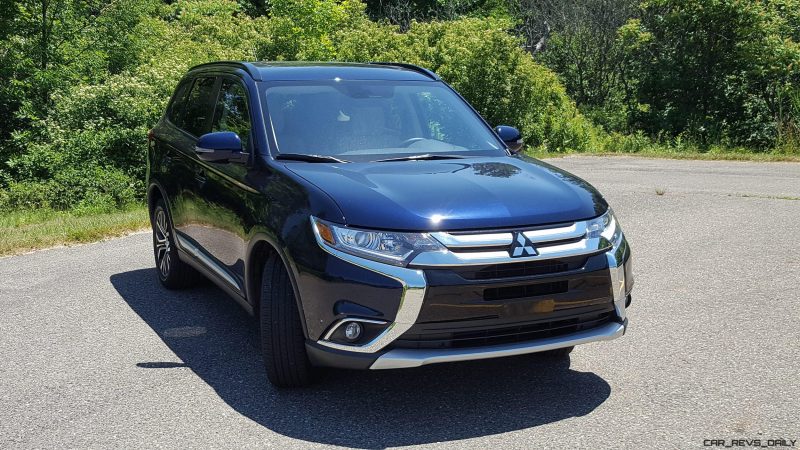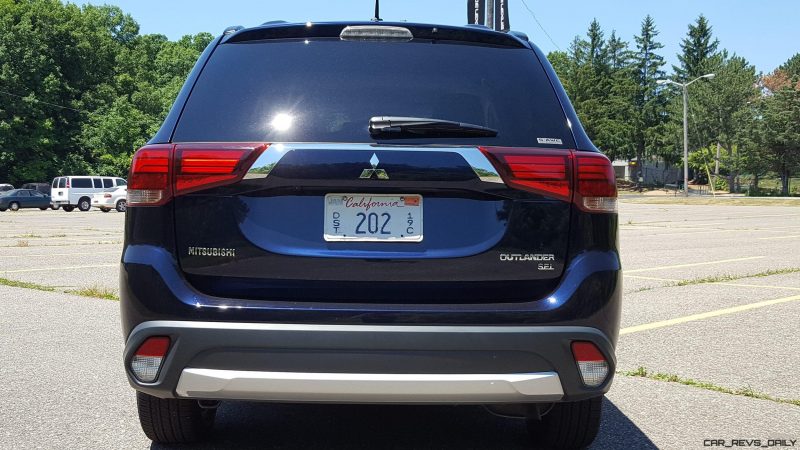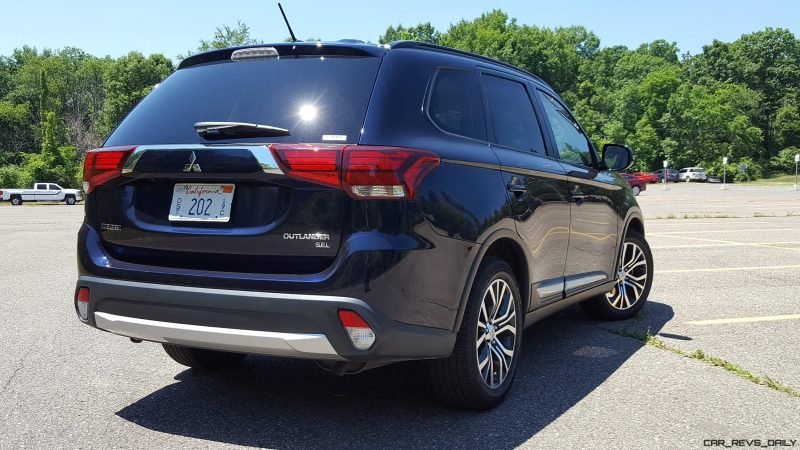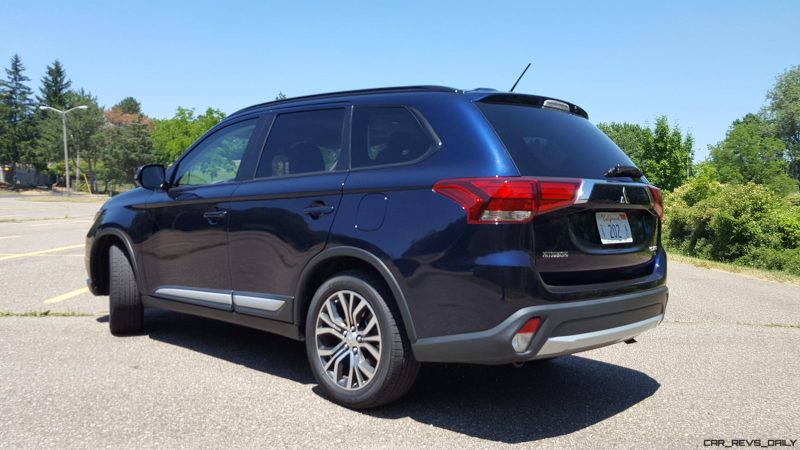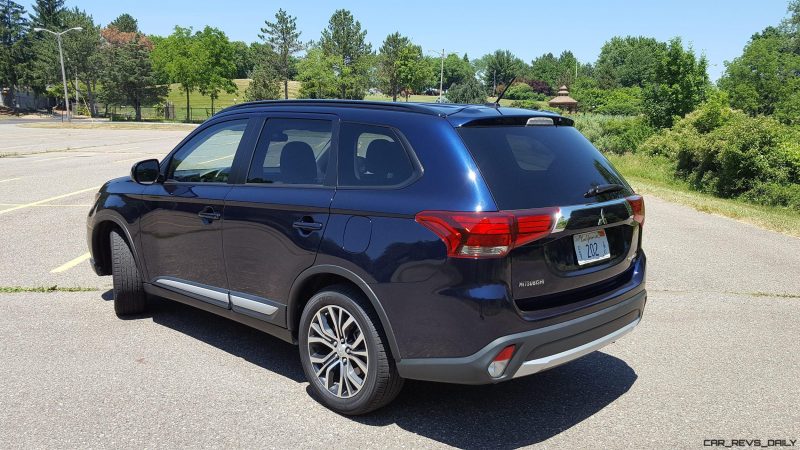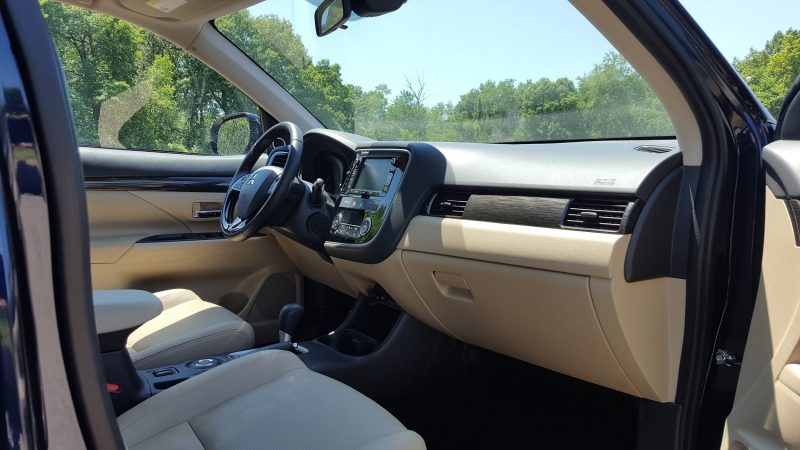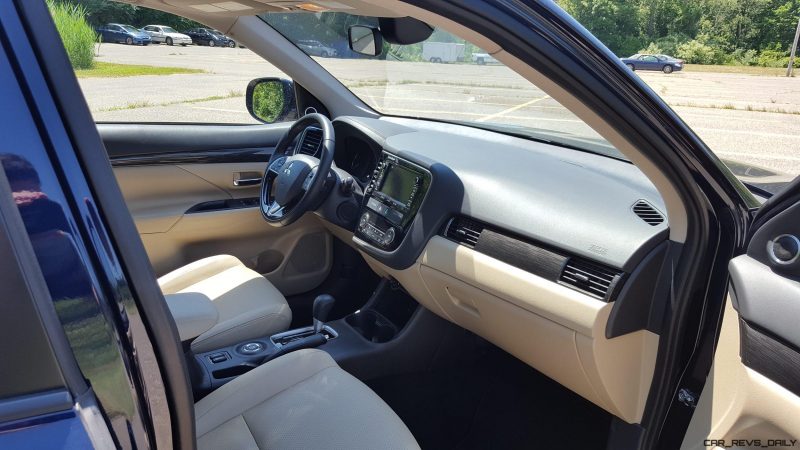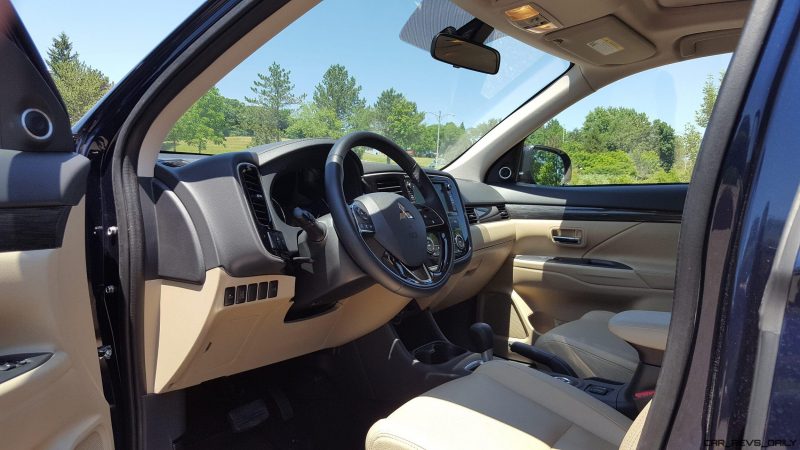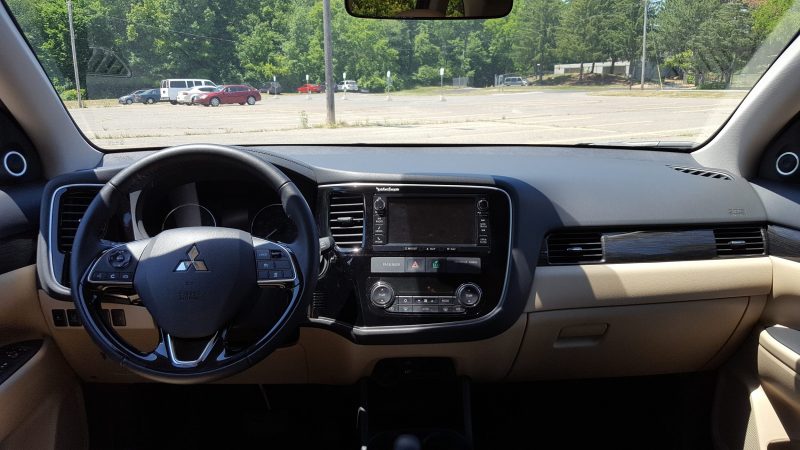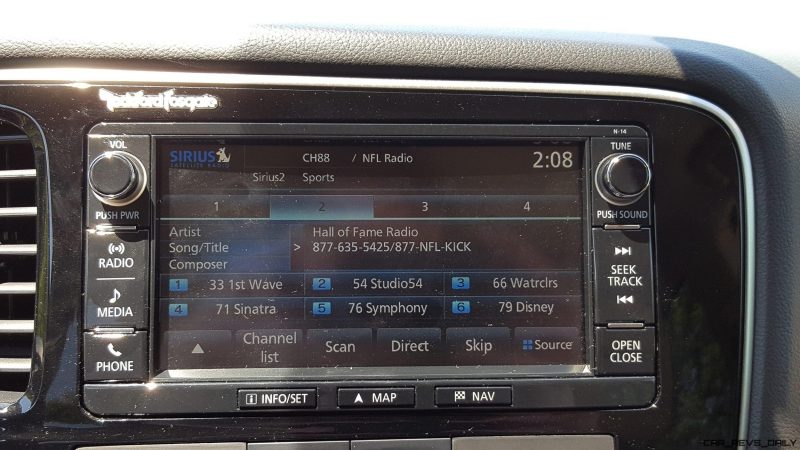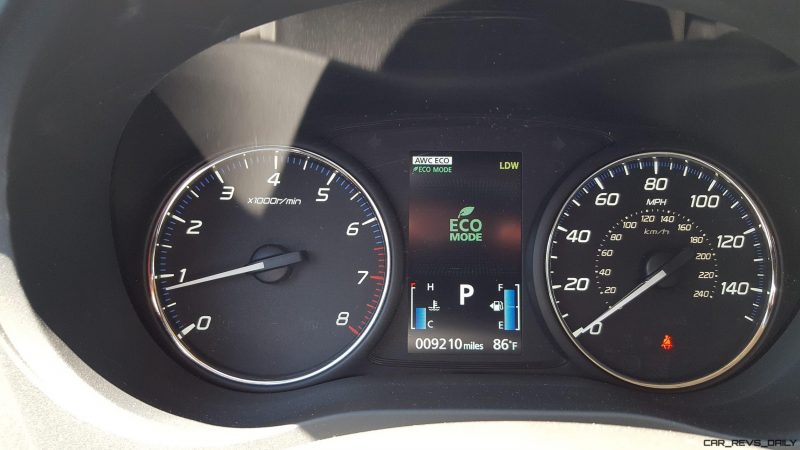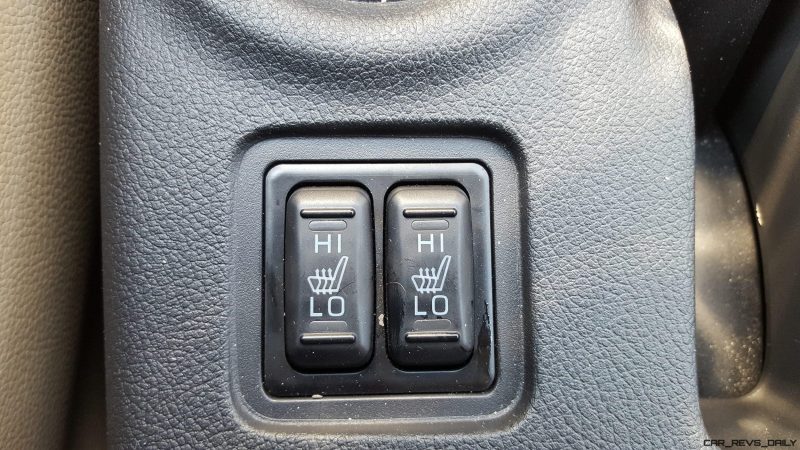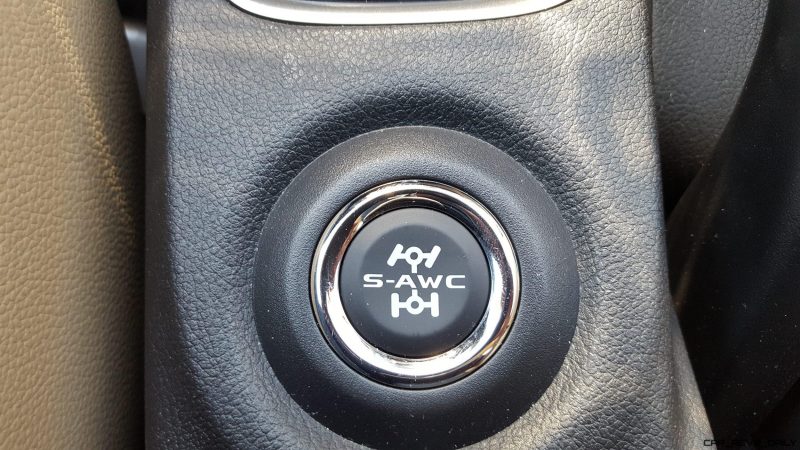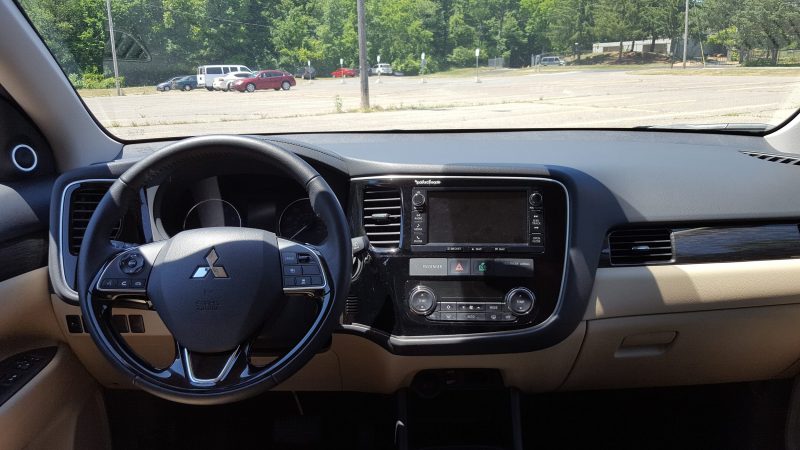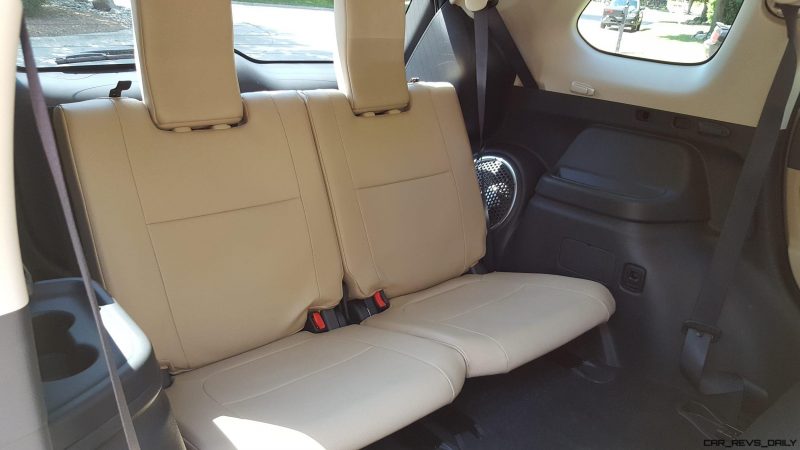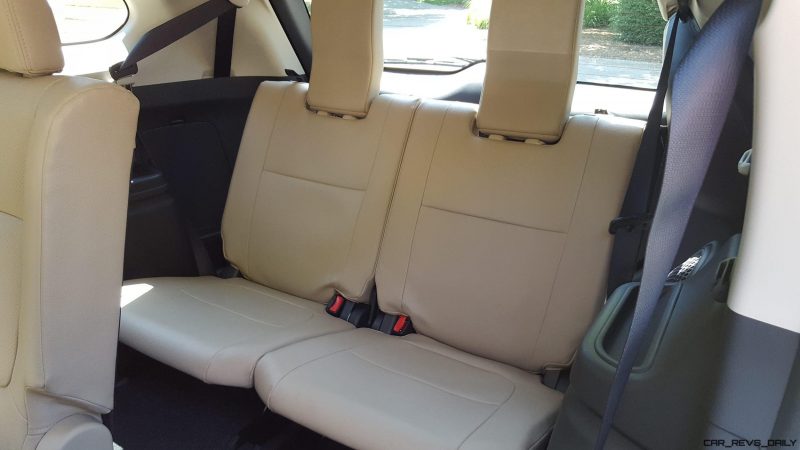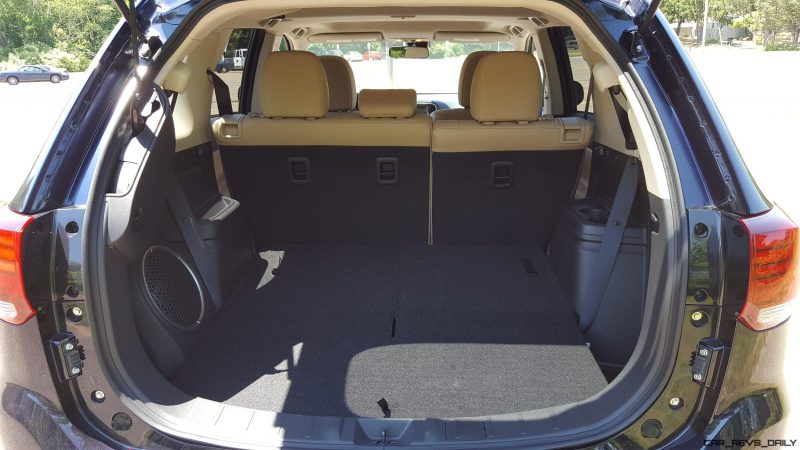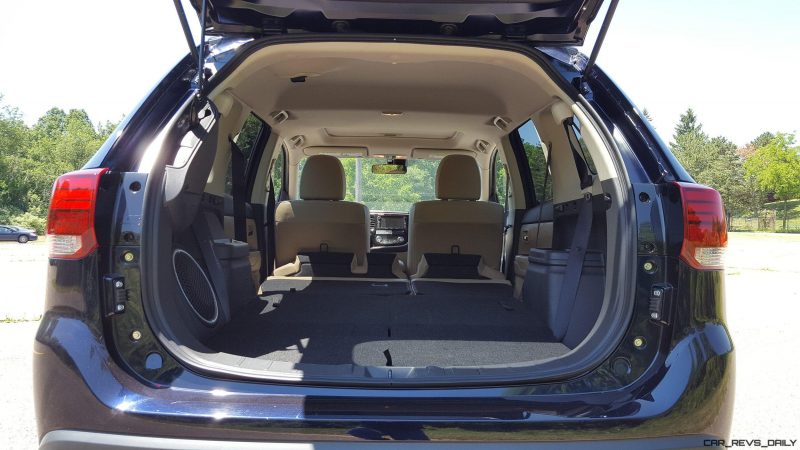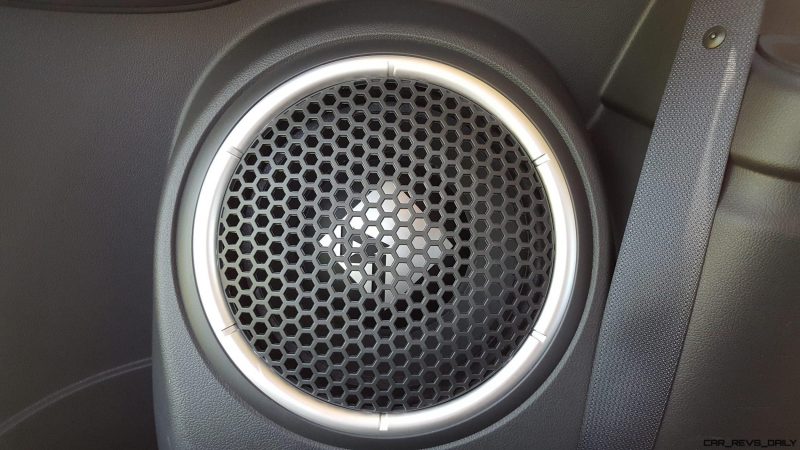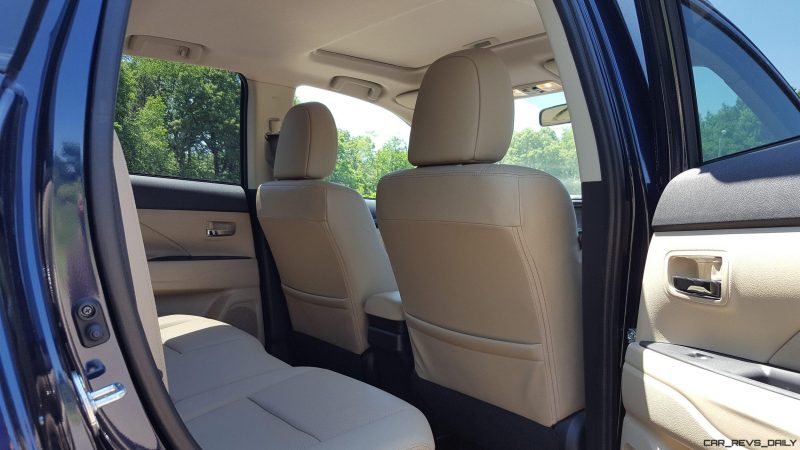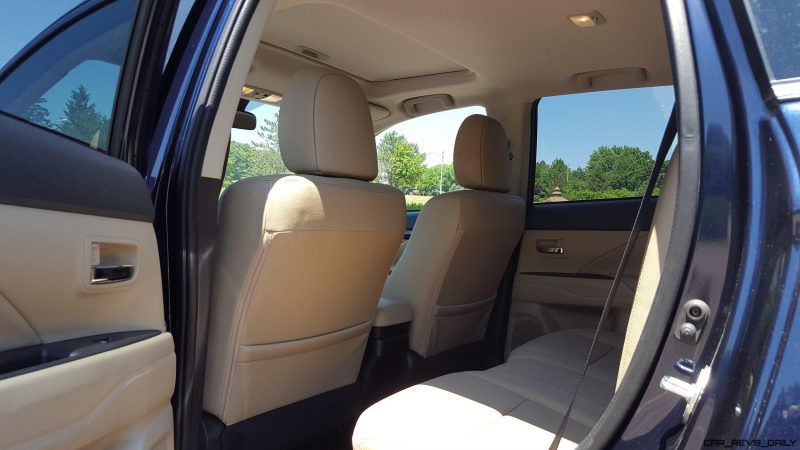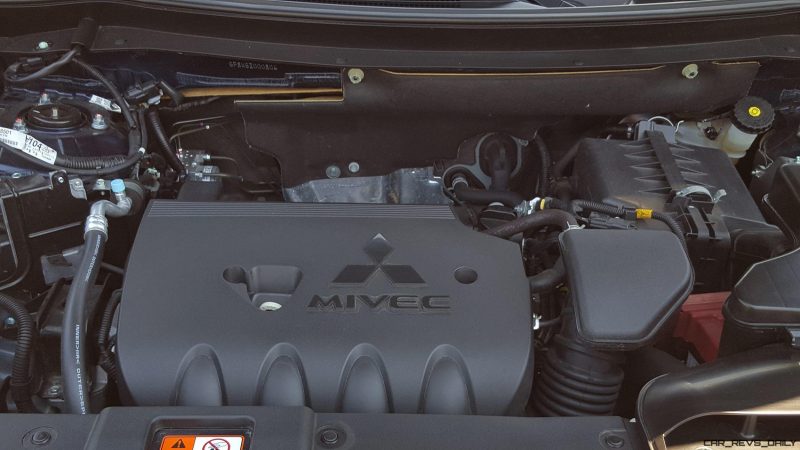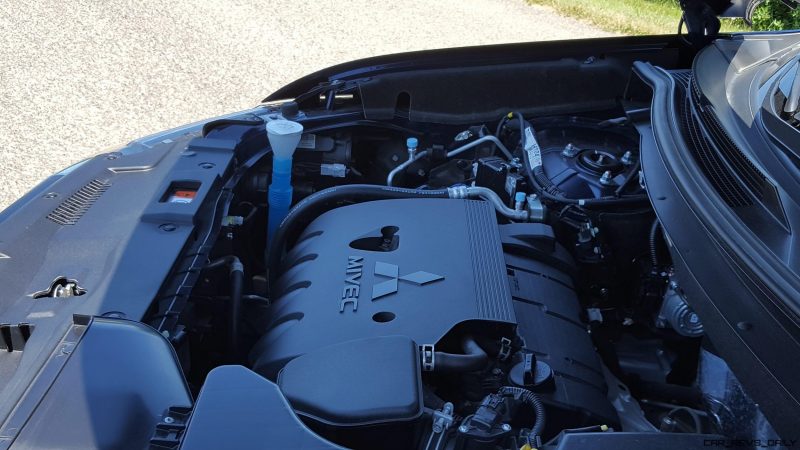2016 has brought a stormy spring to our beloved Mitsubishi.
From the firm’s recent troubles with emissions, to the ensuing merger with Nissan, the company has forged through some pretty turbulent waters.
But can models like the recently updated 2016 Outlander allow Mitsubishi to tap into the recent surge in SUV/CUV sales? Or does it get lost in the shuffle?
The exterior styling of my Cosmic Blue tester is certainly an improvement over past iterations of the Outlander, but it ends up being disjointed and unbalanced. On the one hand, the front fascia embodies the sporty spirit that once defined some of Mitsubishi’s past models and includes a bold chrome grille, slick headlights, as well as an aerodynamically inspired shape. However the side profile awkwardly transitions to the rear which adopts a more functional suit of clothes. The taillights are very handsome, but the rest of the shape is a bit bland when compared with rivals. Lastly the rims on my tester looked sporty, but appeared a bit small on my tester.
The interior of my tester also had a mixed execution but there is some bright spots that do shine. For example, the leather seats were very comfortable and offered enough long distance comfort to soak up the miles thanks in part to their cushy padding. Visibility was also very good, and while the Outlander will never be mistaken for a true luxury SUV, its ability to muffle road and wind noise was a commendable surprise especially on long freeway trips. The second row seats provided occupants with good amounts of leg room though they do get cramped with three passengers on board.
This particular Outlander also featured Mitsubishi’s color infotainment system. The screen is on par with rivals when it comes to overall size, but the cluttered nature of some of the input buttons did make accessing some features a bit difficult. The unit itself also swivels outward to allow access to the CD player and the dual SD card inputs. This is a very neat feature, and proved to be a very good conversation piece with passengers. The lone gripe I had with this unit (that would present itself time and time again) was its overprotective safety nets for the hands free phone system. While I will give Mitsubishi props for only allowing formal input of phone numbers when parked, making the touch operated dialing feature for the phonebook have the same restriction added unnecessary aggravation, especially since rivals like the Mazda CX-5, and Jeep Cherokee allow drivers to select and dial a contact in the phonebook while the vehicle is moving.
However amid all of these bright points, there were also some warts. The interior featured its fair share of hard plastics, and the faux wood trim also did not extend to the second row doors creating an awkward look. The placement of buttons and switches is ergonomically sound, but three of the buttons are hidden behind the steering wheel, including the button that selects the various displays for the center mounted color TFT display. This particular button’s location is an odd choice since other models have it as a satellite control either on the steering wheel or on the multifunction stalk. Lastly the third row seats are best suited for children due to their poor levels of leg and headroom as well as the gymnastics act required for entry and exit.
Performance for the 2016 Outlander comes from either a 2.4 liter MIVEC four cylinder engine or an uplevel 3.0 liter MIVEC V6. My tester had the base 2.4 liter engine which is good for 166 horsepower and 162 lb-ft of torque. These figures are eclipsed by rivals, and it shows out on the road where acceleration is smooth but leisurely. A CVT is the sole transmission choice available and does a good job providing smooth shifts with only minimal gear hunting.
Buyers looking for more muscle can opt for the V6, but the four cylinder makes up for its lack of track credentials by offering good fuel economy with the fuel sipping engine capable of achieving 29 mpg and a combined total of 26 mpg. A built in Eco Mode (identified in big green letters on its dashboard mounted button) allows the Outlander to achieve its full green potential especially with its built in leaf display that adds ro takes away a leaf depending on your driving habits. My tester also featured Mitsubishi’s Super All-Wheel Control (S-AWC.) Essentially a trick all-wheel drive system, it allows the Outlander to offer four different modes (AWC Eco, Normal, Snow, and Lock.) Eco sends power to only the front wheels most of the time, but can split it to the rear wheels if the driver needs to tackle slippery surfaces. The other three modes offer more traditional all-wheel drive with Lock mode being used for off road excursions.
Pricing for the 2016 Outlander starts at a modest $22,995 with my SEL grade tester starting at a slightly higher $26,995, which is roughly on par with its rivals. This price tag was ballooned by $5,250 due to optional extras which pushed the final price to a lofty $33,095. This pricing is not cheap, and is not helped by the company’s small dealer network with the closest dealer to my Michigan based office being 10 miles away. Hopefully with more updates, the Outlander will be a true threat to more established mainstream contenders, but until then its shortcomings, as well as the small pool of U.S. dealers will be formidable hurdles in its quest for SUV sales domination.
Model: 2016 Mitsubishi Outlander SEL S-AWC
Engine: 2.4 liter four cylinder
HP/Torque 166/162
EPA Fuel Economy: 24/29 (26 mpg combined)
Options: SEL Touring Package $5,250
Pricing: $33,095 including $850.00 destination charge

Carl Malek has been an automotive journalist for over 10 years. First starting out as a freelance photographer before making the transition to writing during college, his work has appeared on numerous automotive forums as well as websites such as Autoshopper.com.
Carl is also a big fan of British vehicles with the bulk of his devotion going to the Morgan Motor Company as well as offerings from Lotus, MG, and Caterham. When he is not writing about automobiles, Carl enjoys spending time with his family and friends in the Metro Detroit area, as well as spending time with his adorable pets.

